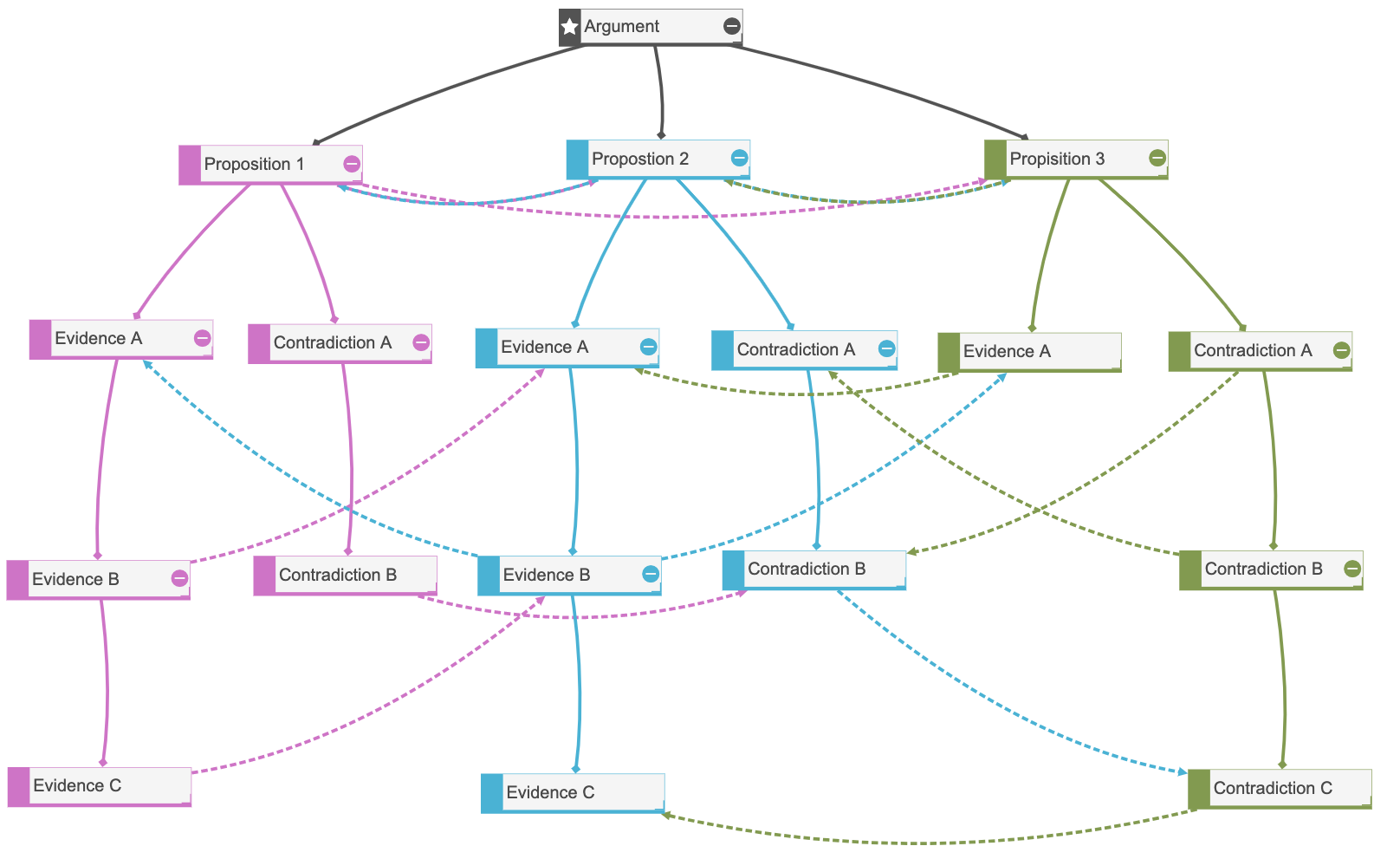Argument maps strengthen business decisions
My father used to say: “Don’t raise your voice. Improve your argument.”
When we feel really passionate about something it can be pretty easy to get frustrated when other people don’t see the issue in the same way that we do. This can lead to ineffective communication.
In business, each little decision can have a huge impact. That’s why it is so important to ensure you have a sound argument to supports each decision you make. This could be justify your own strategic choices or to convince somebody else, like an investor, that the direction is right for your business. You can can do this by creating a mind map or an ‘argument map’.
An argument map is a visual representation of a logically structured network of reasoning, in which the argument is made unambiguous and explicit.
Build an argument map
There are five steps to making an argument map:
- Enter the argument at the top of the map.
- Enter the main propositions of the argument. This might include the central claims or main points to your argument.
- Add the evidence…
- and contradictions you’ve gathered for each proposition.
- Finally, insert arrows between the propositions, evidence and contradictions to indicate inferential relationships that link them together.
Psychologist Christopher Dwyer conducted experiments as part of his PhD that investigated structuring an argument using this argument mapping technique. His results indicated that the technique can significantly facilitate memory and performance beyond that of more traditional study methods.
For example, let’s say you wanted to convince your team leader that the business should be increasing the investment into social media marketing.
- First set this as your argument at the top of the map: Increasing investment into social media marketing
- Next you should set out your three main points proving why the company should invest in this area, eg.
– The wider reach of social media compared to other channels
– The younger audience it attracts is not currently being reached through the company’s existing marketing strategy
– A major competitor recently improved their social media marketing by using influencers to promote their products with successful ROI - Then you need to add evidence for each of these points, eg.
– Global market: 45% of the world’s population are now active social media users
– Target market: 42.5% of Facebook users are between the ages of 18-34 - To ensure that you’ve considered any flaws or details that may dispute the evidence and claim, add contradictions, eg.
– Although social media usage has greatly increased in the last decade, that growth slowed to only 0.6% increase last year in the UK - Finally, add arrows that link any points you feel have a relationship. This will help you see the argument as a whole.
Find further details of the research above here and here.

Using research and case studies
You can link research findings and case studies to back up the points in your mind map by developing each point with notes and images.
For example, you may add a case study to explain how so much of Red Bull’s success comes from their social media marketing:
“With more than 26.8 million “Likes” Red Bull’s Facebook Page ranks in the top 50 branded pages on the world’s largest social network.”
“What makes a brand stand out is how it transforms an audience into a community. Red Bull’s unique content reflects who it is as a media company and always focuses on its core message, making its posts shareable and bringing fans back for more.”
Examples from other businesses can help you to strengthen your argument, particularly if you have not yet tested out a strategy and therefore cannot reflect on your own data.
Presenting your argument map
Once you’ve prepared your argument map with research findings and case studies, it’s time to present these to your team and/or stakeholder group.
The benefit of using a visual mind map for your presentation is that you can use contextual or inspiring images and work your way around the screen visually, ensuring your entire team is always engaged, whilst keeping everyone on the same page. For stakeholders, you can export your mind map to MS Office documents like Microsoft Word, which is a highly efficient way to provide them with a hand-out supporting your presentation.
After leading your team through your logically structured argument map, and explaining the attached research findings and case studies, you will have successfully argued your point in a clear and concise way (without the risk of word-babble that so many of us fall victim to).
By building an argument map, you’ll be empowered to make carefully considered business decisions that will help your company thrive.



